In March 2021, OnePlus unveiled the successor of its popular 8 Pro– the OnePlus 9 Pro. Packed with top-end technology, the latest flagship includes Qualcomm’s Snapdragon 888 chipset, 5G connectivity, and a 4500 mAh battery with fast wireless charging. There’s also a 6.7-inch AMOLED LTPO display with an automatic variable refresh rate up to 120 Hz, and a choice of either 8 RAM / 128 GB, or 12 RAM / 256 GB handsets. On the audio side, however, there’s not much the Chinese manufacturer lets on, except for the Dolby Audio and the noise cancellation algorithms. Let’s find out more about its audio performance, in both playback and recording.
Audio specifications include:
- Two speakers for stereo playback (top front-firing, and bottom right side firing)
- Dolby Audio
About DXOMARK Audio tests: For scoring and analysis in our smartphone audio reviews, DXOMARK engineers perform a variety of objective tests and undertake more than 20 hours of perceptual evaluation under controlled lab conditions. This article highlights the most important results of our testing. Note that we evaluate both Playback and Recording using only the device’s built-in hardware and default apps. (For more details about our Playback protocol, click here; for more details about our Recording protocol, click here.)
Test summary
Scoring
Sub-scores and attributes included in the calculations of the global score.
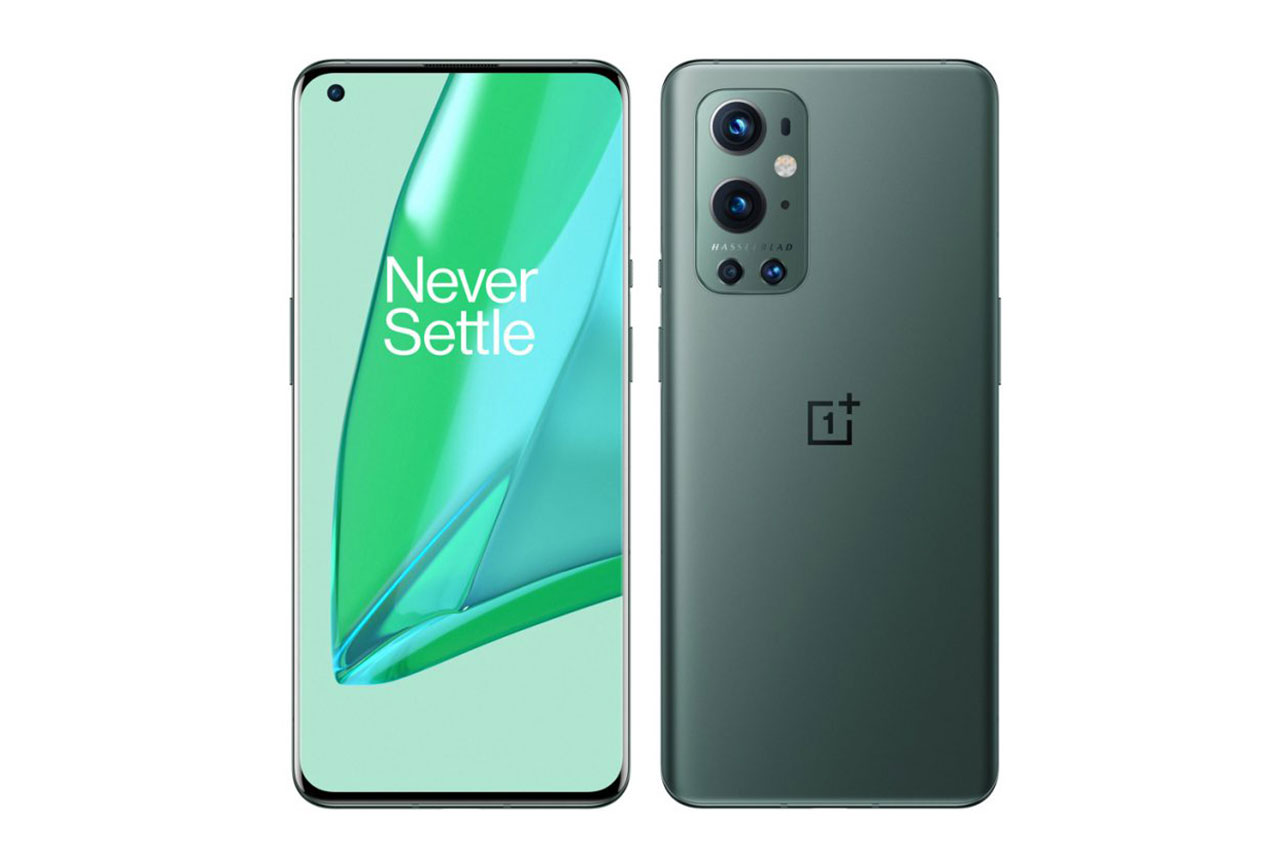
OnePlus 9 Pro


 105th
105th 59th
59thPlayback
Pros
- Fairly clear and natural timbre restitution
- Precise attack at all volumes and decent bass precision
- Good localizability
- Good loudness at maximum volume, and intelligibility at minimum volume
Recording
Pros
- Pleasant timbre in life videos, despite recessed high-end and a lack of clarity
- Good envelope rendering, correct signal-to-noise ratio
- Great wideness and localizability in life videos
- Great loudness in life videos
With an overall score of 69, the OnePlus 9 Pro bests its predecessor, the OnePlus 8 Pro, and its more affordable sibling, the OnePlus 9.
In Playback testing, the OnePlus 9 Pro outscores the 8 Pro in every category evaluated. Thanks to a very good volume performance, a fairly natural timbre, sharp attack, good wideness of the sound field, and precise localizability of the sources throughout it, the smartphone is well suited for gaming and watching movies. Music playback, however, suffers from the lack of low- and high-end extension, and at maximum volume, sound can become quite aggressive.

In the Recording area, the 9 Pro also consistently outshines his forerunner in all categories except for background, where they come in ex-aequo. Audio recordings exhibit very good dynamics, with an accurate envelope rendering and a correct signal-to-noise ratio, but a lack of both high- and low-end extension across all scenarios. In terms of use cases, life videos fare particularly well, with a pleasant timbre, great wideness and localizability, and very satisfactory loudness. Speaking of loudness, memos exhibit excellent nominal loudness, at -15.1 LUFS. In contrast, selfie videos are less well-endowed, with a mono capture of the sound field, less precise localizability of the various sources, disappointing loudness, and a very midrange-focused timbre.
Sub-scores explained
The DXOMARK Audio overall score of 69 for the OnePlus 9 Pro is derived from its Playback and Recording scores and their respective sub-scores. In this section, we’ll take a closer look at these audio quality sub-scores and explain what they mean for the user.
Playback

Timbre
OnePlus 9 Pro
62
89
Timbre tests measure how well a phone reproduces sound across the audible tonal range and takes into account bass, midrange, treble, tonal balance, and volume dependency.
The OnePlus 9 Pro delivers a fairly good timbre restitution thanks to an overall clear and natural tonal balance, clean and airy treble, and natural midrange. At low volumes, timbre remains natural and appreciable.
That said, as you can see in the graph above, tonal balance is slightly too focused on high-midrange, a feature emphasized by the lack of bass, low midrange (and therefore a lack of warmth and body), and high-end extension. Along with a slight bump in the lower treble frequencies, this induces an acid frequency response — albeit undoubtedly less aggressive than the OnePlus 9’s, except at loud volumes where the higher midrange’s prominence becomes more obvious, and hissing appears. All in all, games, movies and classical music benefit from a better timbre restitution than hip hop and electronic music.

Dynamics
OnePlus 9 Pro
67
81
DXOMARK’s dynamics tests measure how well a device reproduces the energy level of a sound source, and how precisely it reproduces bass frequencies.
The 9 Pro’s playback dynamics performance shines with particularly good attack results: sharp from softest to loudest volumes, it allows for an accurate transient reproduction. Despite their lack of low-end, the speakers manage to recreate a decent-to-good (depending on the use case) bass precision. Punch is honorable, but could have been significantly more impactful with a better low-midrange energy.

Spatial
OnePlus 9 Pro
68
88
The sub-attributes for perceptual spatial tests include localizability, balance, distance, and wideness.
Playback spatial attributes is something of a strong suit for the OnePlus 9 Pro. Localizability of the sources throughout the sound field is very precise, wideness is good, and distance rendering is well above average, although sources sound slightly closer than they should.

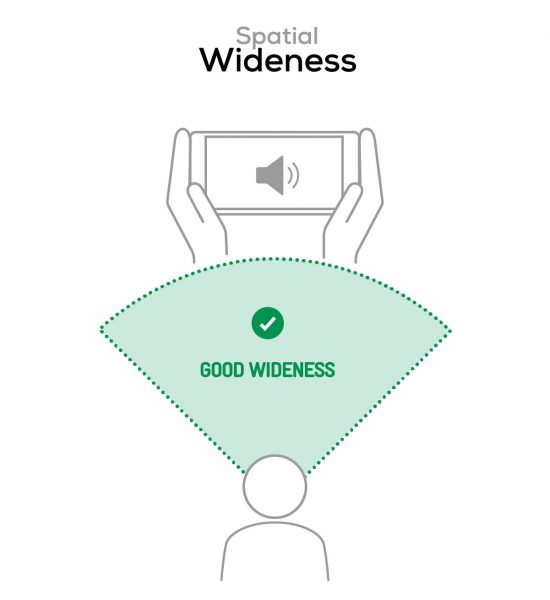
An area of improvement would be to implement an automatic rotation of the stereo sound field according to the device’s orientation, and a perfectly centered balance, which still slightly leans towards the right (or bottom, in portrait mode) speaker.

Volume
OnePlus 9 Pro
71
91
Volume tests measure both the overall loudness a device is able to reproduce and how smoothly volume increases and decreases based on user input.
The speakers’ volume performance is very satisfactory: while maximum volume is good, volume steps are fairly evenly distributed, from softest to loudest. Concerning softest volumes, the OnePlus series had a middle ground to reach: while the OnePlus 7 Pro’s minimum volume was too loud, its successor’s was too faint.


Mission accomplished! This time around, OnePlus achieved an adequately tuned minimum volume, allowing dynamic contents (such as movies and classical music) to remain fully intelligible, without being too loud. Here are the results of the objective measurements we carried out in our laboratories, using recordings of both hip-hop and classical music played at the maximum user volume step:
| Hip-Hop | Classical | |
| OnePlus 9 Pro | 75.5 dBA | 72.4 dBA |
| OnePlus 9 | 75.9 dBA | 72.4 dBA |
| OnePlus 8 Pro | 76.7 dBA | 73.5 dBA |
Artifacts tests measure how much source audio is distorted when played back through a device’s speakers. Distortion can occur both because of sound processing in the device and because of the quality of the speakers.
Audio played back through the 9 Pro’s speakers exhibit few artifacts, securing an above-average score. At nominal volume, if no spectral artifacts are observed, very discreet noise and temporal artifacts are noticeable. At maximum volume, slight compression comes out, as well as noticeable bass distortion. Incidentally, synthetic test signals are heavily subjected to artifacts — but unless you’re planning on using your smartphone as a sine wave generator, that shouldn’t be too much of a problem.
Recording

Timbre
OnePlus 9 Pro
83
91
As a recording device, the OnePlus 9 Pro turns in a great timbre performance overall, with an exceptionally good bass quality sub-score. The frequency response is flattest (that is, best) when recording life videos and concerts, but other tested use cases are not very far behind.
Each scenario has its strengths and weaknesses. While tonal balance is pretty flat when recording live concerts, it lacks high-end extension and clarity. When filming videos with the rear cameras, although lacking both low- and high-end extension, timbre is clear and natural. Finally, selfie videos have a less pleasant tonal balance — somewhat dark, midrange-focused, not very natural.

Dynamics
OnePlus 9 Pro
67
81
Dynamics captured by the 9 Pro’s microphones are fairly good with precise attack (even though plosive could still be a little sharper), accurate sound envelope, and correct signal-to-noise ratio. Unlike the OnePlus 9, no drastic noise reduction was noticed in selfie videos. When filming in loud environments such as a concert, despite compression (that can occasionally even become pumping), the sound envelope remains accurate overall.
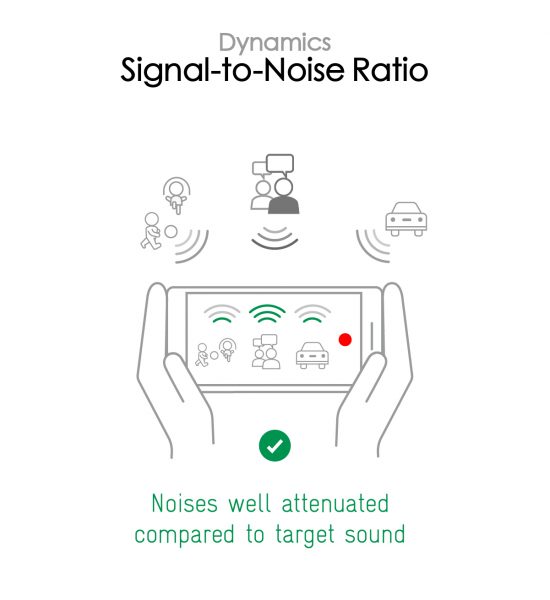
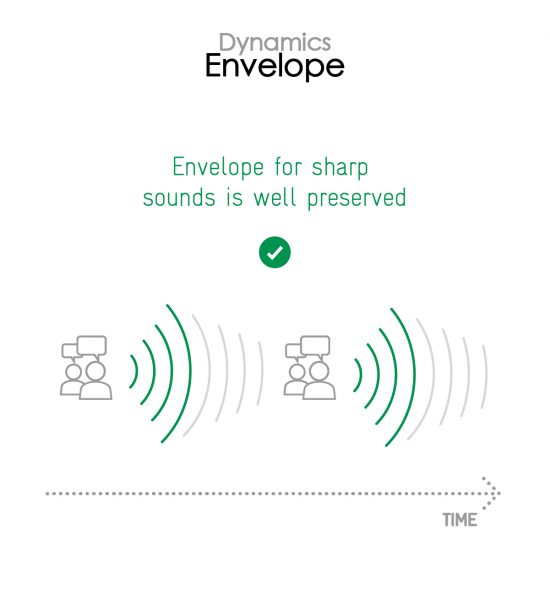

Spatial
OnePlus 9 Pro
50
78
Unlike in playback, spatial attributes from the recording point of view are only average, due to an uneven performance depending on the use case. In life videos, localizability is good and wideness is great. In contrast, selfie videos exhibit imprecise localizability, and a monophonic reproduction of the sound field. Overall, sound sources are perceived slightly further than they should, but distance rendering is still well within acceptable margins.


Volume
OnePlus 9 Pro
58
99
Nominal loudness is by far highest in memo recordings. Maximum reachable volume without perceivable distortion is good, which means the device handles correctly recording in loud environments. On the other hand, selfie videos have particularly low loudness. Here are our test results, measured in LUFS (Loudness Unit Full Scale). As a reference, we expect loudness levels to be above -24 LUFS for recorded content:
| Meeting | Life Video | Selfie Video | Memo | |
| OnePlus 9 Pro | -23.5 LUFS | -22 LUFS | -24.7 LUFS | -15.1 LUFS |
| OnePlus 9 | -29.5 LUFS | -20.6 LUFS | -19.4 LUFS | -19.4 LUFS |
| OnePlus 8 Pro | -24 LUFS | -21.9 LUFS | -20 LUFS | -18.4 LUFS |


Artifacts
OnePlus 9 Pro
75
97
Once again, the 9 Pro surpasses its predecessor — this time around, by no less than five points. Except for the occasional distortion on sudden shouts, sonic artifacts are overall kept to a minimum. However, in life videos, a slight hissing can be heard in the background. In the context of a concert, slight pumping and treble distortion can be perceivable. You can check for artifacts yourself in this sample recording:

Background
OnePlus 9 Pro
44
60
Background is the only sub-category in which the 9 Pro doesn’t outperform the 8 Pro, as they both have the exact same score. Tonal balance for background sounds is pretty good in life videos, albeit somewhat unnatural and inconsistent in terms of frequencies. Selfie video backgrounds on their part can sound a bit dark and boomy.
Conclusion
One smartphone after the other, OnePlus continues to improve its flagship series. In terms of audio, the 9 Pro performs consistently better than its predecessor, across all use cases, and all categories. While it might not be the best choice for music playback, or for selfie enthusiasts, the OnePlus flagship is well suited for playing games, watching movies, filming concerts or, more generally, recording videos with the rear cameras, and recording memos.


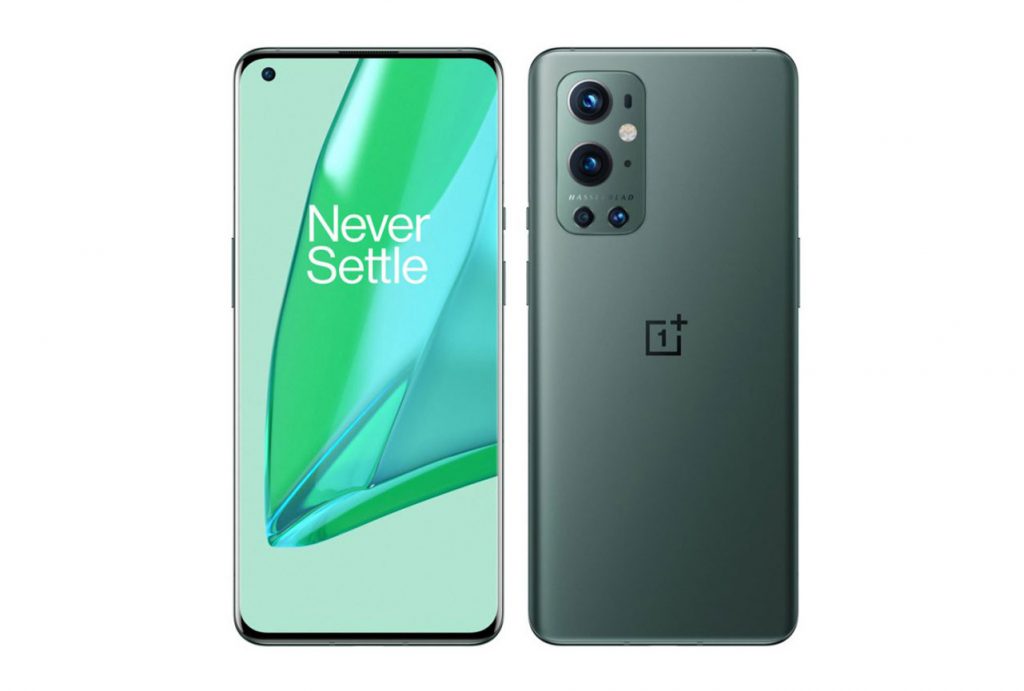
DXOMARK encourages its readers to share comments on the articles. To read or post comments, Disqus cookies are required. Change your Cookies Preferences and read more about our Comment Policy.